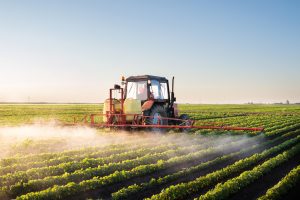Stating that it intends to embark on a more widespread effort to combat pest resistance to pesticides and herbicides, EPA’s Office of Pesticide Programs (OPP) has issued two Pesticide Registration Notices (PRNs), one applicable to all conventional pesticides (herbicides, fungicides, bactericides, insecticides, and acaricides) and the second applicable to herbicide-resistant weeds.

Over time, pests (e.g., insects, weeds, rodents, bacteria, fungi) build up a resistance to any pesticide/herbicide that is continually used to control them. The OPP notes that pesticide resistance is growing worldwide. For example, globally, the number of unique herbicide-resistant weed species has risen from 1 in 1957 to over 440 in 2014. Between 1908 and 2012, the number of insecticide-resistant arthropod species has risen from 1 to 574.
“While the genetics of any individual pest population plays a role, a major human factor that fosters resistance development is a lack of understanding of resistance-management options available to crop producers who use pesticides routinely,” notes the EPA.
The PRN for conventional pesticides focuses on improving information on product labels about how pesticide users can reduce resistance. The PRN for herbicides takes a more holistic approach by providing guidance on labeling, education, training, and stewardship for herbicides undergoing registration review or registration.
Conventional Pesticides
PRN 2017-1, Guidance for Pesticide Registrants on Pesticide-Resistance Management Labeling, revises and updates PRN 2001-5, although much of the content in the revision is unchanged from the earlier PRN. The new material provides additional guidance to registrants on information to place on labels; includes references to external technical resources for guidance on resistance management; and updates the instructions on how to submit changes to existing labels to enhance resistance-management language.
PRN 2017-2 also describes a recommended format for including useful resistance management information on pesticide labeling.
Pesticides categorized as plant-incorporated protectants are covered by separate guidance on resistance management, which is issued by OPP’s Biopesticides and Pollution Prevention Division.
Herbicides
PRN 2017-2, Guidance for Herbicide-Resistance Management, Labeling, Education, Training, and Stewardship, states that the holistic approach to herbicide resistance is necessary because herbicides are the most widely used agricultural chemical; no new herbicide mechanism of action (MOA) has been developed in the past 30 years; the number of herbicide-resistant weeds are rapidly increasing; and the potential economic impact of herbicide-resistant weeds on U.S. agriculture is significant.
“It is important that multiple stakeholders be actively involved in developing and implementing herbicide resistance management strategies,” states the OPP. “Herbicide resistance evolves based on complex interactions of the chemical, pest, and agronomic practices. To address the economic and social factors that drive grower behavior, a collaboration of growers, crop advisors, academia, federal and state regulators, registrants, and others is needed.”
In addition to the guidance on general holistic topics noted above, PRN 2017-2 indicates that registrants may identify additional case-specific measures that are deemed appropriate to reduce the risk of development and spread of herbicide-resistant weeds during registration review or registration actions. This could include such measures as disallowing reapplication of the herbicide on the same crop in the following year or time-limited registration.
The PRNs are available here.
